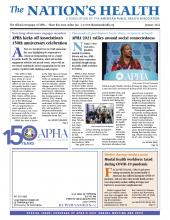
For more tips, visit www.cdc.gov/lice
One of the most common things kids pass on to one another is also one of the ickiest: head lice.
No larger than a sesame seed, lice have annoyed humankind for millennia. In fact, head lice and their eggs — called “nits” — have been found on the hair and scalps of ancient Egyptian mummies.
Though they are often viewed with alarm, the good news is that head lice don’t spread disease.
“When your kids get them, you get grossed out, but head lice are not dangerous,” says A. Yasmine Kirkorian MD, chief of the Division of Dermatology at Children’s National Hospital in Washington, D.C.
Head lice are parasitic insects, which means they need a human host to stay alive. They live on the scalp and hair and feed on human blood. Females deposit their nits on strands of hair close to the scalp, attaching them firmly with a glue-like substance. The nits, which range in color from white to yellow, can be mistaken for dandruff or a grain of sand. An adult head louse can live a month on your head, but will die in a day or two if it falls off.
Head lice can’t hop, jump or fly, but the wingless critters can crawl fast, making it easy for them to swing like Tarzan from one head to another by using their claws to grab onto a strand of hair. While you can get head lice at any age, children account for most infestations. According to the Centers for Disease Control and Prevention, as many as 12 million cases of head lice occur each year among children ages 3 to 11, leading to a lot of itchy heads and frantic parents. When one member of a household is diagnosed with lice, everyone’s heads should be examined for signs of an active infestation and treated if necessary.
“Don’t feel ashamed or question your hygiene,” Kirkorian says. “Head lice do not know socioeconomic status. Lice are everywhere. If your children get head lice, we can deal with it and we have good methods.”
There are a range of safe, over-the-counter, lice medications that can work well if you follow the instructions on the box. However, some head lice are becoming resistant to over-the-counter treatments, so you may need a prescription strength medication.
Make sure you’ve removed all of the nits on your child’s head with a fine-tooth nit comb. Missing some nits can keep the infestation going. When in doubt, contact your health care provider for guidance. And don’t be afraid to ask for help.
The nit-picky facts
It might not be possible to totally avoid getting head lice, especially if you live in a household with children, but there are some things you can do to help prevent their spread. If you or your child has head lice, be honest and open with anyone who might have come in contact with your family. Head lice are often passed back and forth among playmates because parents are too embarrassed to talk about the situation.
“It’s not the end of the world,” says Linda
Mendonça, DNP, RN, president of the National Association of School Nurses. “The stigma is what really does bother us in school nursing. And that’s what we are really working hard to try to eliminate. It’s about educating.”
Head-to-head contact is a louse’s preferred path to a new head. Small children are especially vulnerable because they often hug each other, or put their heads together during playtime or at school. Head lice can also be spread by sharing hairbrushes, barrettes, hats, towels, clothes or other personal items.
Basic housekeeping measures can help keep head lice from coming back. The risk of getting reinfected by a louse that’s fallen onto a carpet or sofa is very small, but vacuuming areas where infected people have recently lounged is not a bad idea. You can also machine wash and dry all bed linens, towels and clothes that were used during the past two days using the hottest settings. Stuffed animals can be sealed in plastic bags for two weeks.
When someone in the house gets head lice, it’s likely that the other humans in the home will too. But you don’t need to worry about your four-legged friends. Dogs and cats can’t catch the kind of lice that lives on humans.
Hold the pickles, skip the mayo
Fads come and go, and if you’ve ever faced a head lice infestation you might have read about the mayonnaise treatment, which has become popular with people hungry for natural head lice remedies. But there’s no scientific proof that mayonnaise will kill lice and nits. Ditto for any of the other home remedies out there, food-related or otherwise.
Instead, check your local pharmacy for shampoos and treatments that are approved by the Food and Drug Administration.
When in doubt, consult your health care provider for advice on head lice treatments.
- Copyright The Nation’s Health, American Public Health Association









